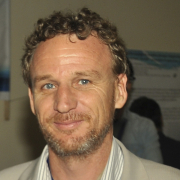Zooplankton and micronekton play an important role in the world's pelagic ecosystems. These organisms are the first two animal levels of the marine food web. These organisms are the prey of marine predators such as tuna, whose populations are heavily exploited by fisheries, as well as birds and marine mammals. Given their distribution in all the oceans and the quantity of biomass they represent, these organisms, especially the micronekton, constitute potential new resources for fisheries. Although they are very different in size (200μm to 2 mm for zooplankton, 2 to 20 cm for micronekton), these two groups of varied species share a singular behaviour: nycthemeral migrations. Indeed, the majority of zooplankton and micronekton organisms travel vertically for hundreds of metres, migrating from the mesopelagic domain where they reside during the day to the epipelagic zone where they spend the night. These resources are therefore major players in carbon export and sequestration due to the nycthemeral vertical migrations they make every 24 hours. This active vertical transport of organisms and the associated metabolic activity (surface feeding at night and deep metabolism during the day) has important consequences for the carbon cycle (Bianchi et al., 2013). However, despite their importance, the specific composition, biomass and spatial and temporal distribution of the zooplanktonic and micronektonic compartments remain relatively unknown. Yet these organisms are routinely recorded with fish echotraces and appear as scattering layers on the echogram of a scientific echosounder. In the context of global change and diminishing fisheries resources, it is necessary to study the distribution, abundance and dynamics of these organisms in relation to their environment in order to gain a better understanding of ecosystem functioning. The study area, the Canary Curent Large Marine Ecosystem (CCLME), is an east coast upwelling ecosystem and one of the most productive in the world. Its productivity is linked to favourable hydro-climatic conditions due to the presence of the coastal upwelling which extends from Morocco to Senegal. This high productivity makes this area a major fishing region in the world.
Thus, knowledge of the zooplanktonic and micronektonic compartments in this area, and their interaction with the pelagic environment, in particular with small pelagics and primary production, will make it possible to improve the sustainable and rational management of fisheries within the framework of the ecosystem approach to fisheries. Active acoustics is a suitable tool to understand these spatio-temporal dynamics of micronekton. It is a non-invasive ocean sampling technique that allows sampling of the water column at high spatial and temporal frequencies (Simmonds & MacLennan, 2005; Brehmer 2006).
The objective is to contribute to the study of the structure and functioning of the southern CCLME upwelling ecosystem. More specifically, it will study the spatial and temporal structuring of the macrozooplankton and micronekton scattering layers in relation to the physico-chemical parameters (biogeochemical concepts) of the ecosystem, primary production and pelagic fish.
- Study the spatial distribution, and dynamics of zooplanktonic and micronektonic organisms forming the diffusing layers;
- To study the environmental processes (ecological, physical and biogeochemical) that determine the structuring of these acoustically detected organisms;
- Characterise the acoustic scattering layers and estimate the biomass of zooplankton (mainly copepods);
- Provide perspectives for assessing the dynamics of pelagic resources and their prey in the context of climate change.


 Surcycler
Scroll to top
Surcycler
Scroll to top